BSM22104 Fundamentals of Business Management Practice Assignment Sample
Module code and Title: BSM22104 Fundamentals of Business Management Practice Assignment Sample
Introduction
Business management is defined as the tools which is used to combine all the elements of the business to achieve the goals. The best ways of the management practice can be used to achieve the goals in the definite time (Shaturaev, 2022). The report will highlight the fundamental of business management practice in Gucci company. This is an Italian fashion house that was founded by Guccio Gucci in 1953. The Company produces the number of goods like hand bags, watch, and many more products.
The report will highlight the brand history, market structure, and leadership that is followed in the Company. The report will also contain the current operations of the business and opportunities for the brand through the SWOT analysis, and product portfolio of the company by using the Boston matrix. Moreover, report will highlight market analysis of the company by using PESTEL analysis. Lastly, the report will also determine the external environment with the help of Poster 5 forces.
Business situation analysis.
2.1
Brand history:
Gucci is an Italian brand house that was introduced in 1953 by Guccio Gucci. This is the most famous brand and can be recognised easily by any person in the world. This started as a small shop for leather bags and then the demand for the Gucci bags increased day by day so the small shop converted into big stores (Lai et. al. 2021). For this successful business, there was the supportive family of the Guccio not only his wife but his child also help him to stitch the leather bags.
After the death of Gucci, his wife run the business and open the brand stores in various countries. She also started selling the Silk scarf of flora which was mostly worn by the actress in Hollywood movies and the bag of Jackie O shoulder. When the sales started increasing people advised them to design the logo then the wife of Gucci Miss Aldo Gucci designed the famous logo which GG.
Marketing strategy of Gucci:
The Gucci Company follows the 4Ps marketing strategy. This is the reason for the success of the brand globally. This marketing mix helps the brand in achieving the determined goals of the firm. The 4p product, price, place, and promotion of the Gucci Company are described below in the brief.
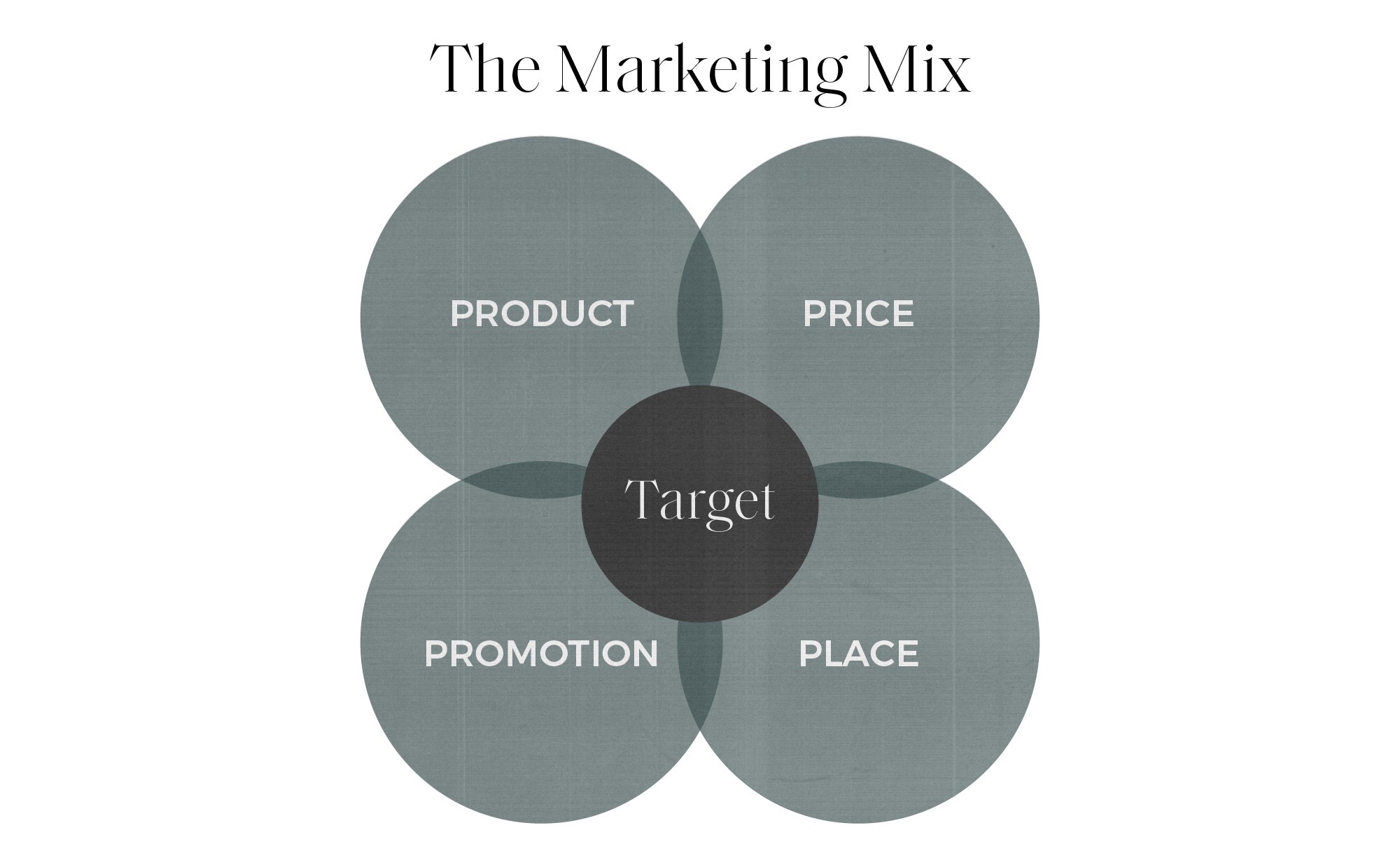 Figure 1 4P’s of the marketing mix (Source: Mollie Kuramoto, 2021).
Figure 1 4P’s of the marketing mix (Source: Mollie Kuramoto, 2021).
Product strategy of Gucci: This is a fashion brand that provides luxury and comfortable goods to their consumer globally. It provides various types of products to their consumer. This product includes handbags, shoes, ready-to-wear products, jewelry, watch, and many other accessories (Liang, 2022). By providing the best product at a reasonable price to their consumer the brand becomes successful and wins the trust of their consumer. This trust helps them to stay in the competitive market for the long run.
Price strategy of Gucci: The prices of each product of the Gucci is very reasonable and can be afforded by every member. The quality of a product which is being provided by the brand is of premium quality at lower prices.
Place strategy of Gucci: The brand exists only in busy places so that people can easily find it and can buy the products (Wang et. al. 2019). By using supply chain management in the effective way the company forms a better product, price, and place strategy.
Promotion strategy of Gucci: The promotion strategy of the brand is very good. They advertise their product by using various advertisements, banners, and social and print media.
2.2
Current business operating structure:
For the proper management of the brand, every small and large organisation needs to follow the proper organisational structure. There are a few common organisational structures that must be followed by the Gucci brand to become more successful globally.
Hierarchical organisation structure: The Gucci brand should use some traditional ways of marketing so that this can help the brand in achieving its goals in a definite period. This method states that the member of each team must be divided into various groups so that the workload can be divided equally among the members of the team (Boisen et. al. 2018). This method will help the member to easily understand what type of work they have to perform within the workplace. Through proper communication, the work can be easily understood by all the team members.
Flat or horizontal organisational structure: In this, the Companies with flat or horizontal structures often have fewer stages of administration or managers above personnel. Horizontal structure is that it gives workers more accountability which in fit needs them to have extra clearness surrounded by better administration (Kim et. al. 2019). In this, the workers obtain the extra duties and need the staff to give extra limpidity. Let the rapid statement and judgment creation.
Functional organisational structure: This is the most common and used type of structure by almost every type of brand and firm. In this type of structure, the departments are created and then the work is divided among all the group members (Pan et. al. 2019). The most common types of departments which play a major role in the proper growth and development of the brand are human resources, accounting, and purchasing. The main advantage the Gucci brand can get by adopting this structure is that the challenges are faced equally by all the team members but if a problem occurs while performing the task then it must be tackled by the expert or the leader of the department.
2.3
The word Gucci is a Latin word that means excellent quality. The business started with leather-based items and when the sales of the items increased then the business is converted into a big store and now it has stores in almost every country. Every business has some strengths, weaknesses, opportunities, and threats. These can be identified by the SWOT analysis.
SWOT analysis of Gucci: Table 1 SWOT analysis
| Strength
· The brand has equity and a brand image. The brand ranges the 31st in the list of providing the best services and items to consumers. · Market presence is also so high for the company (Spiegel et. al. 2020). As there are several stores present in the world Gucci. · The brand also provides premium quality products to its consumers. So this helps them in winning the loyalty of the consumers. |
Weakness
· The first and most important weak point of the company is that the brand name has been blame by the media. · The brand spends a large amount of money on advertisement. So that the firm can remain backward from its competitor in terms of its monetary value. · Due to the media blame, the company is not able to develop a new product. So for remaining in the competitive market they need to adopt the latest styles which are highly demanded by the consumer. |
| Opportunities
· The firm should use advertisement by using E-commerce. They can save money by advertising through social media. · Advertising through the use of social media will help them to attract the young generation in large numbers because they are highly addicted to this. · If Gucci needs to increase sales then they should focus on every branch (Sági et. al. 2020). This will help the brand to increase its profit and market dominance.
|
Threats
· The biggest threat which is being faced by the firm is substitute products. There are several substitutes available in the market. · There is large number of competition in the fashion market. So this becomes the biggest challenge for the brand to produce a unique product to attract the consumer. · The brand can face difficulties due to the change in the rules and regulations of the government. |
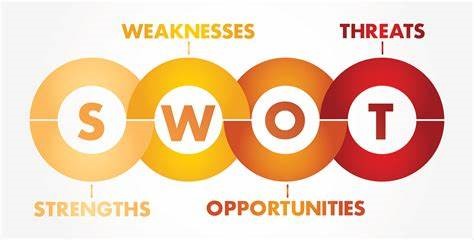 Figure 2 SWOT analysis (Source: Dennis Stanley, 2020).
Figure 2 SWOT analysis (Source: Dennis Stanley, 2020).
From the above discussion of the SWOT analysis of Gucci, it is clear that Gucci is one of the most luxurious but nowadays it is facing many problems. The firm is currently facing several threats which are mostly arising due to the decrease in revenue in recent 2020. The main strength that the firm has is its strong brand image globally. The firm should adopt more management practices so that the weakness of the brand can be improved.
2.4
Boston matrix of Gucci:
This matrix is also known as the BCG matrix. This is founded by the Boston consulting group. Four classifications are based on the two measurements. This matrix for Gucci helps in applying the profitable level of ideas for its commercial parts. These four parts are stars, cash cows, question marks, and dogs.
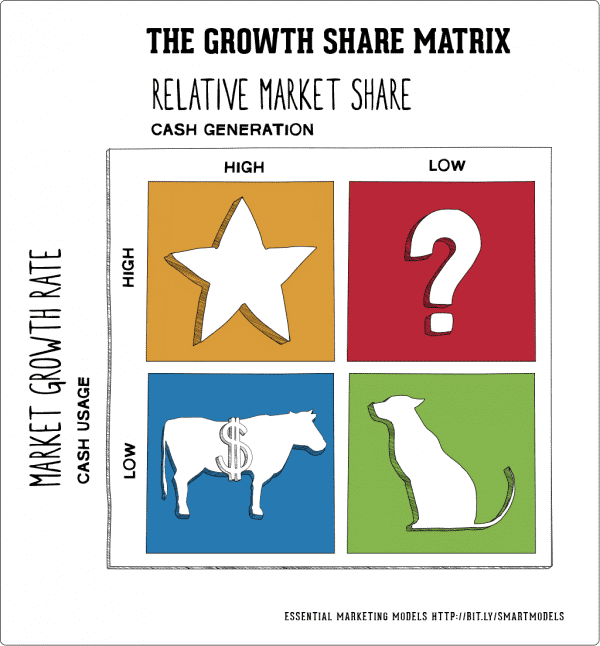 Figure 3 Boston Matrix (Source: Annmarie Hanlon, 2022).
Figure 3 Boston Matrix (Source: Annmarie Hanlon, 2022).
- Stars: The Number 1 product Planned commercial component is a star in the BCG matrix of Gucci, and this is the product that produces the maximum transactions among its invention group (Grisold al. 2021). The possibility is high because the consumer are demanding same type of products in large number. Gucci should experience a creation growth plan for this SBU, where it grows original structures on this produce through exploration and growth. This will help Gucci by fascinating more consumers and rises its deals.
- Cash cows: The Number 2 brand planned commercial component is a cash cow in the BCG matrix of Gucci. This is an advanced creation that has a marketplace share of 25% in its group. Gucci is also the marketplace front-runner in this group. The overall category has been declining slowly in the past few years. Gucci has the authority to affect the marketplace in this group (Nurfitriya al. 2021). Later, it should capitalise on investigation and growth so that the product could be updated. This will help the group to grow and convert this cash cow into a star. This investigation will help in increasing the sales of the Gucci.
- Question mark: The Number 3 brand planned commercial unit is a question mark in the BCG matrix for Gucci. This is the unit which is rising very quickly in the market. Through this unit the company has been experiencing harms in the past few years (Liang al. 2020). It has also been unsuccessful in the efforts made for investigation and growth sides. The suggested plan for Gucci is to get the rid and avoid any upcoming harm from happening.
- Dog: The Number 4 product planned commercial component is a dog in the BCG matrix for Gucci. This is unit which is working in a marketplace section that is decreasing in the previous 5 years. The business also has destructive incomes from this planned commercial component. However, it is also analysed that the market will also create some ecological changes which will help them in increasing their sales (Torquati al. 2018). The optional plan for Gucci is to capitalise on the commercial sufficient to change into a cash cow. If the sales started growing in future than the income of Gucci will also increase.
2.5
External environment analysis refers to the study of the external environment within which the business works. For analysing the external environment in a better manner the PESTEL analysis can be done within the organisation. From this, the political economic, social, technological, environmental, and legal factors of the Gucci Company can be analysed. These factors are defined below in brief.
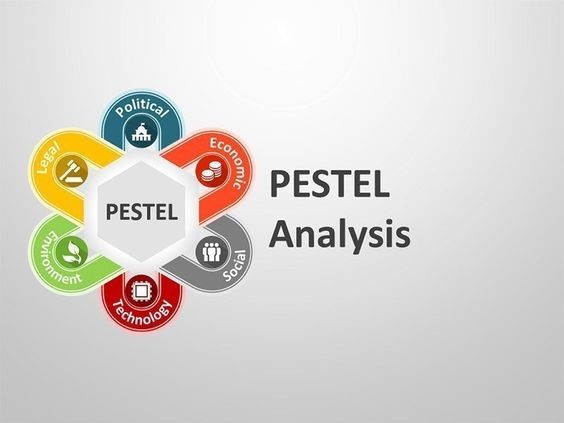 Figure 4 PESTEL analysis (Source: M. parastan, 2021).
Figure 4 PESTEL analysis (Source: M. parastan, 2021).
Table 2 PESTEL analysis
| Particulars | Analysis |
| Political factors | Political factors have an excessive effect on trade. As Gucci is a brand known in almost every country (Choucri, 2019). So before entering in the market any country it is essential to understand all the laws related politics of that country. These will help them to keep their investment safe. |
| Economical factor | These is a factor that has a straight and complete impact on every type of business (Urbano et. al. 2019). The GDP and standard of living of the people have increased. As the company has made many efforts to fulfill the demand of the consumer. |
| Social factors | These factors play a very significant role to identify whether the company can operate as per the culture of the country or not (Dmytriyev et. al. 2021). As the Gucci brand has produced always the best quality product which helps them in building the loyalty of the consumer. |
| Technological factors | Technology is changing day by day. So it is essential to use the current technologies (Haseeb et. al. 2019). Gucci uses the top technologies which help them in delivering the best product in a very short time. |
| Environmental factors | Gucci brand is aware of the environment. So they try to produce goods which are environment friendly and cause no harm to the environment. |
| Legal factors | Gucci follows all the rules and regulations of every country and provides a good amount of salaries to their employees. |
From the above discussion of the PESTEL analysis of the Gucci brand, it is clear that the brand has a strong position within the marketplace as they are following all the rules and regulations. That is the reason why the company is serving for the very long run in the market. From this discussion, it is also clear that the Gucci is a Moocher kind with a gifted and bright future ahead.
2.6
Potter’s five forces analysis of Gucci:
Porter’s five forces analysis of Gucci covers the Business’s Economical background as well as the elements distressing its segment. This analysis will focus on the threat of new entrance, the threat of substitutes, the bargaining power of buyers, the bargaining power of suppliers, and competitive rivalry.
The threat of new entrance: Gucci provides an actual place to shop and has great product fairness. Gucci creates fashionable goods that are traded at their stores (Bruijl et. al. 2018). This high-end style firm has very little danger of novel applicants.
Threats of substitutes: The Company suffers a lot from the alternative product. As the duplicate copies of the brand are available at lower cost. This become hard to identify the original product. So the threat of substitute is higher.
Bargaining power of buyers: The Company is a luxury brand and several brands are accessible at a similar level. The prices of the product are fixed so the bargaining power of the buyer is very low in Gucci.
Bargaining power of Suppliers: The firm is operating in the market for the long run and has trusted suppliers (Cho et. al. 2019). As they provide the goods to Gucci as per the demand of the consumers. So, the bargaining power of the suppliers is high in Gucci as they can increase their labor prices.
Competitive rivalry: Gucci sells several products and has several competitors. So, the competitive rivalry is high for the Gucci brand.
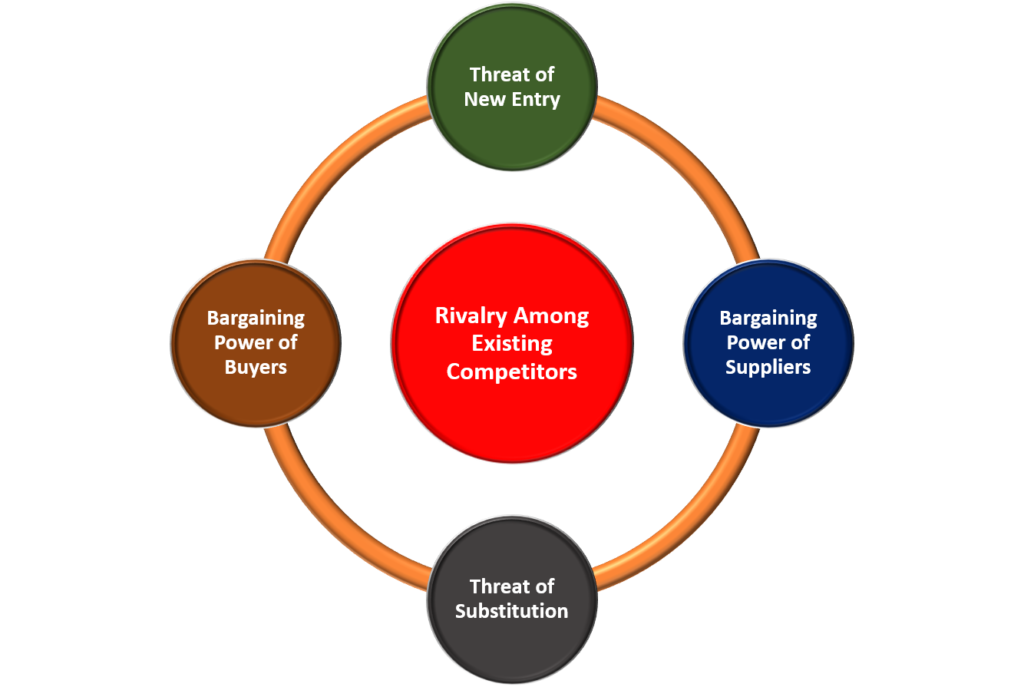 Figure 5 Porter’s five forces (Source: Kevin O Sullivan, 2018).
Figure 5 Porter’s five forces (Source: Kevin O Sullivan, 2018).
From the above discussion of the potter’s five forces of Gucci, numerous aspects have been dyed which influence the competitive atmosphere of Gucci. This sympathy aids to assess the numerous exterior trade for any business.
Conclusion
From this report, it is concluded that business management is defined as the tools which is used to combine all the elements of the business to achieve the goals. The best ways of the management practice can be used to achieve the goals in the definite time. The report has identified the company’s background, and current business operating structure.
The strength, weaknesses, and opportunities are also analysed by using the SWOT analysis, and analysis of performance has been done through the Boston matrix. Market analysis of Gucci has been done by using the PESTEL analysis, and lastly, effect of external environment is also identified by using the Porter’s five forces.
References
Boisen, M., Terlouw, K., Groote, P. and Couwenberg, O., (2018). Reframing place promotion, place marketing, and place branding-moving beyond conceptual confusion. Cities, 80, pp.4-11.
Bruijl, D. and Gerard, H.T., (2018). The relevance of Porter’s five forces in today’s innovative and changing business environment. Available at SSRN 3192207.
Cho, W., Ke, J.Y.F. and Han, C., (2019). An empirical examination of the use of bargaining power and its impacts on supply chain financial performance. Journal of Purchasing and Supply Management, 25(4), p.100550.
Choucri, N., (2019). International Political Economy: A Theoretical Perspective. Change in the international system, pp.103-129.
Dmytriyev, S.D., Freeman, R.E. and Hörisch, J., (2021). The relationship between stakeholder theory and corporate social responsibility: Differences, similarities, and implications for social issues in management. Journal of Management Studies, 58(6), pp.1441-1470.
Grisold, T., vom Brocke, J., Gross, S., Mendling, J., Röglinger, M. and Stelzl, K., (2021). Digital innovation and business process management: opportunities and challenges as perceived by practitioners. Communications of the Association for Information Systems, 49(1), p.27.
Haseeb, M., Hussain, H.I., Kot, S., Androniceanu, A. and Jermsittiparsert, K., (2019). Role of social and technological challenges in achieving a sustainable competitive advantage and sustainable business performance. Sustainability, 11(14), p.3811.
Kim, J.H., Kim, B.G., Roy, P.P. and Jeong, D.M., (2019). Efficient facial expression recognition algorithm based on hierarchical deep neural network structure. IEEE access, 7, pp.41273-41285.
Lai, H. and Xian, Z., (2021), December. The Success of Luxury Goods Branding in China: A Case Study of Gucci. In 2021 3rd International Conference on Economic Management and Cultural Industry (ICEMCI 2021) (pp. 1278-1281). Atlantis Press.
Liang, G., Hou, H., Chen, Q. and Hu, Z., (2020). Diffusion and adoption: an explanatory model of “question mark” and “rising star” articles, 124(1), pp.219-232.
Liang, Z., (2022). Analyzing the Marketing Strategy of Luxury from the” Co-branding” Activities of Gucci and Balenciaga. Frontiers in Economics and Management, 3(11), pp.73-79.
Nurfitriya, M., Koeswandi, T.A.L., Fauziyah, A. and Budiman, A., (2021), February. West Java Leading Product Position: BCG Matrix Analysis. In The 1st International Conference on Regional Economic and Development. Redwhite Press.
Pan, S., Trentesaux, D., Ballot, E. and Huang, G.Q., (2019). Horizontal collaborative transport: survey of solutions and practical implementation issues. International Journal of Production Research, 57(15-16), pp.5340-5361.
Sági, J., Chandler, N. and Lentner, C., (2020). Family businesses and predictability of financial strength: A Hungarian study. Problems and Perspectives in Management, 18(2), pp.476-489.
Shaturaev, J., (2022). Bad Management Hypotheses Are Demolishing Management Practices. Архив научных исследований, 2(1).
Spiegel, J., Adhikari, S. and Balasubramanian, S., (2020). The structure and function of DNA G-quadruplexes. Trends in Chemistry, 2(2), pp.123-136.
Torquati, B., Scarpa, R., Petrosillo, I., Ligonzo, M.G. and Paffarini, C., (2018). How can consumer science help firms transform their dog (BCG Matrix) products into profitable products? (pp. 255-279). Woodhead Publishing.
Urbano, D., Aparicio, S. and Audretsch, D., (2019). Twenty-five years of research on institutions, entrepreneurship, and economic growth: what has been learned? Small Business Economics, 53(1), pp.21-49.
Wang, H., Pu, Y., Ragauskas, A. and Yang, B., (2019). From lignin to valuable products–strategies, challenges, and prospects. Bioresource technology, 271, pp.449-461.
Online
Annmarie Hanlon, (2022). What is Boston Matrix? [Online]. (Accessed through): https://www.smartinsights.com/marketing-planning/marketing-models/use-bcg-matrix/ (Accessed on 13th December, 2022).
Dennis Stanley, (2020). What is SWOT analysis? [Online]. (Accessed through): https://www.marriage-stanley.com/journal/why-you-need-to-conduct-a-personal-swot-analysis/ (Accessed on 13th December, 2022).
Kevin O Sullivan, (2018). What is Porter’s five forces? [Online]. (Accessed through): https://knowledgecompass.com/porters-five-forces-industry-intensity-attractiveness/ (Accessed on 13th December, 2022).
- parastan, (2021). What is PESTEL analysis? [Online]. (Accessed through): https://in.pinterest.com/pin/659073726708585274/ (Accessed on 13th December, 2022).
Mollie Kuramoto, (2021). What are 4P’s of marketing mic? [Online]. (Accessed through): https://elementthree.com/blog/marketing-mix-breaking-down-the-4-ps-of-marketing/ (Accessed on 13th December, 2022).
Know more about UniqueSubmission’s other writing services:

